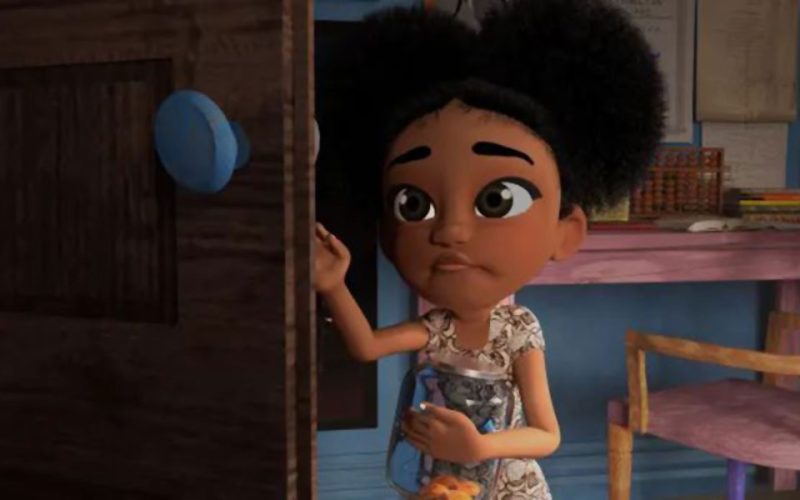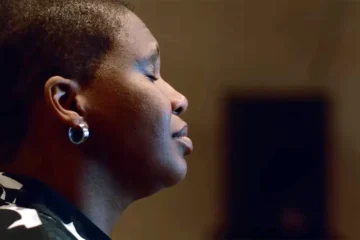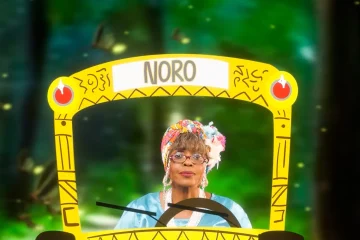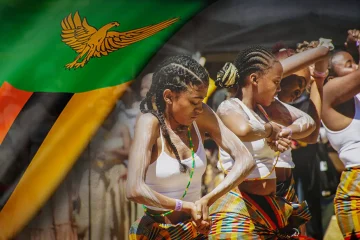SETH ONYANGO, BIRD NEWSROOM
AFRO-URBAN entertainment powerhouse, Trace, has begun distributing “Lady Buckit and the Motley Mopsters” – a Nigerian feature-length 3D animated film – after inking a deal with Hot Ticket Productions to distribute the film globally.
In May this year, Trace’s distribution arm inked a deal with Hot Ticket Productions to distribute Nigeria’s first feature-length 3D animated film, “Lady Buckit and the Motley Mopsters” worldwide – opening the door to a potential global audience for an animation that was originally conceived in the home of a Nigerian geologist.
The wide success of the movie is not only a testament to the determination of its creators and to the growing clout and sophistication of Nigerian filmmaking, but its success also turned geologist-cum-filmmaker, Blessing Amidu, into a force to be reckoned with in African animation.
Securing Trace as a circulation channel has given the animated movie an opportunity to grow its international audience at a time when COVID-19 has kept millions of people from stores, restaurants, and movie theatres. Trace holds rights for television channels, mobile operators, video platforms and cinema, providing premium afro-urban content to leading digital platforms with a potential audience of 400 million in 160 countries.
“Lady Buckit” has also been nominated for Annecy Festival 2021. Trace asserted in the film’s admission that “the animation film is booming in Africa thanks to the determination of real enthusiasts for drawing and animation.”
“The release of the first Nigerian feature-length, cinematic animation film, Ladybuckit and the Motley Mopsters, opened the doors to animation in Nigeria,” Trace said.
Such a positive reception to “Lady Buckit” by both industry and viewers has given Amidu, the film’s executive producer, a first career win. However, for her, the journey has been about more than just producing the movie, it also meant pivoting from geologist to filmmaker.
“They may seem like two separate worlds but in fact, they are not. The ‘art’ is who I am and the ‘geologist’ was whom I had to become to survive,” she explained in an interview with bird.
The film is set in pre-colonial Oloibiri, located in Bayelsa State, in the eastern Niger Delta where crude oil was first discovered in commercial quantities in the 1950’s. There, a curious eight-year-old is accidentally transported through time and encounters a band of highly unusual characters who change her destiny.
Despite its comparatively low budget – at around a million US dollars – the film has attracted a wide viewership in Nigeria and the producers are now looking for it to do the same around the world.
Adebisi Adetayo, who directed the movie from the story developed by Stanlee Ohikhuare told bird that the animation movie is proof that a great film doesn’t have to mimic Hollywood to be phenomenal.
“Lady Buckit” transcends generations, with both kids and adults able to relate with both the storyline and the characters.
Its success, despite being released in the midst of a raging global pandemic, suggests a coming of age for a new genre of Nigeria’s much-touted “Nollywood” film industry.
“Lady Buckit” also came on the heels of criticism of Hollywood for what was seen as the disembodiment of black cartoon characters. The Nigerian animation by contrast features a diversity of black African characters. The movie’s dialogue also proudly incorporates Nigeria’s vernacular languages of Ijaw, Pidgin, and Yoruba, in addition to English.
The animated film featured voice actors including veterans Patrick Doyle, Bimbo Akintola and Kalu Igweagu, newcomers Kelechi Udegbe, and Awazi Angbalaga, and child actors, Jessica Edwards, David Edwards, and David Akpakwu.
Amidu narrated to bird how, one evening, while watching a cartoon with her children, she felt inspired to create.
“It all began with just spending time with my kids, just having family time… I began to discover real-time that my kids exhibited the same mannerism as the cartoons,” Amidu recalled.
“I began to have ideas just play around in my head and that is how ‘Lady Buckit’ was born.”
Amidu has two girls and twin boys, who are always fond of mimicking cartoon characters and one of the boys is always in his underpants.
One evening, he strolled into the room in his underpants and the thought struck her: “why don’t I make an animation?”
“I told them about it and we all laughed it off, but when my first girl who was 13 at the time and has a penchant for sketching made sketches of characters, I thought to myself that this thing could really work.”
From a young age, Amidu had always been mesmerized by animation, like ‘Voltron: The Defender of the Universe’, and her favourite, ‘Bigfoot and Wildboy’ – so, to create her own was really special.
But it was not all smooth sailing. The film production suffered several setbacks, including a cash crunch and difficulties assembling a team that could produce the movie.
After about two years, with around 40, 000 US dollars spent and no progress made, Amidu, miffed but determined, considered paying American or Asian firms to produce the film. Then Adetayo emerged. He had been engaged to direct a movie that was to be shot in India.
“I was meant to direct the movie while it was being produced in India. But then I asked, ‘can I see the script of what I am going to India to direct?’ When I was showed the synopsis of the story, I told them point-blank that this movie can be produced here in Nigeria,” Adetayo said. He was cut out of the project immediately.
“I was told, ‘we have we have already spent cash and there was nothing to show for it and now you are telling us it can still be done in Nigeria?”
Three months later, he received a call from the director of M-Net’s series, who set up a meeting between him and the “Lady Buckit” producers, for him to demonstrate how the film could be produced in Nigeria. He did so and less than a year later, the movie was on the country’s big screens.
The movie is estimated to have cost about 1 million US dollars to produce, a negligible amount compared to “Soul”, which gobbled up 150 million US dollars.
Adetayo asserts that big budgets are well and good but don’t always translate into quality. He insists that “education is the future of the industry. Throwing money at things doesn’t solve every problem”
For Amidu, the importance of “Lady Buckit’ is also how it is able to change the narrative in and on Nigeria, especially with its setting in the Oloirbiri, in the oil-rich but much neglected Niger Delta.
“Every story coming out of that place (Niger Delta) has been that of violence, deprivation, suffering and poverty for people living in that region…so coming up with this tory sort of changes that narrative, here we get to see Oloibiri in different light…it shows that this girl, despite all the challenges is able to overcome them and excel,” she said.
Making the film in Nigeria was also an important statement.
“Coming back to Africa, no part of this production was done out of Nigeria…and you can take this production anywhere and it will be able to fly. Nobody thought we could do animation, leave alone 3D animation,” she said.
Today, when Amidu picks up the remote to watch “Lady Buckit and the Motley Mopsters”, it is like watching tiny bits of her children’s actual characters displayed on the grand screen.
Following the success of “Lady Buckit”, Amidu and her new production studio feel they are just getting started. An idea for a sequel is already in the works. The animation industry – which is valued at 270 billion US dollars globally – is still a budding industry in Nigeria and “Lady Buckit” has shown there is clearly plenty of room for growth.
According to UNESCO, Africa’s movie industry is making impressive strides as audiences on the continent increasingly choose made-in-Africa movies over foreign ones. This was made evident in 2010 when Chineze Anyaene’s film, ‘Ijé: The Journey’, became the second highest-grossing film in Nigerian cinemas, behind Avatar, the highest-grossing film worldwide.














